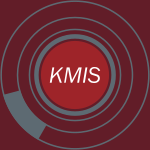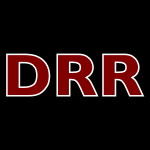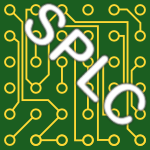125 papers:
 ICEIS-v2-2015-CavallariAT #aspect-oriented #mobile
ICEIS-v2-2015-CavallariAT #aspect-oriented #mobile- Organisational Aspects and Anatomy of an Attack on NFC/HCE Mobile Payment Systems (MC, LA, FT), pp. 685–700.
 ICEIS-v3-2015-Syynimaa #architecture #enterprise #modelling
ICEIS-v3-2015-Syynimaa #architecture #enterprise #modelling- Modelling the Resistance of Enterprise Architecture Adoption — Linking Strategic Level of Enterprise Architecture to Organisational Changes and Change Resistance (NS), pp. 143–153.
 MoDELS-2015-KulkarniBCB #complexity #towards
MoDELS-2015-KulkarniBCB #complexity #towards- Toward overcoming accidental complexity in organisational decision-making (VK, SB, TC, BSB), pp. 368–377.
 ICEIS-v1-2014-SkoumpopoulouW #case study #implementation
ICEIS-v1-2014-SkoumpopoulouW #case study #implementation- The Organisational Impact of Implementing Integrated IS in HE Institutions — A Case Study from a UK University (DS, TSW), pp. 119–127.
 ICEIS-v2-2014-Chung #complexity #profiling #realtime #towards
ICEIS-v2-2014-Chung #complexity #profiling #realtime #towards- Towards Real-time Static and Dynamic Profiling of Organisational Complexity (KSKC), pp. 466–471.
 ICEIS-v3-2014-CrickC #comprehension
ICEIS-v3-2014-CrickC #comprehension- Understanding the Role of Business — IT Alignment in Organisational Agility (CC, EC), pp. 459–464.
 ICEIS-v3-2014-KwanroengjaiLTS #framework #performance
ICEIS-v3-2014-KwanroengjaiLTS #framework #performance- Operational Alignment Framework for Improving Business Performance of an Organisation (JK, KL, CT, LS), pp. 352–359.
 PPDP-2014-Schopp #low level #source code #using
PPDP-2014-Schopp #low level #source code #using- Organising Low-Level Programs using Higher Types (US), pp. 199–210.
 SAC-2014-Fernandez-MarquezSSYDZ #approach #mobile #self
SAC-2014-Fernandez-MarquezSSYDZ #approach #mobile #self- Self-managing and self-organising mobile computing applications: a separation of concerns approach (JLFM, GDMS, GS, JY, SD, FZ), pp. 458–465.
 CHI-2013-CoughlanPM #collaboration #education #reuse
CHI-2013-CoughlanPM #collaboration #education #reuse- Building open bridges: collaborative remixing and reuse of open educational resources across organisations (TC, RP, PM), pp. 991–1000.
 DUXU-PMT-2013-RaisonS #agile #approach #design
DUXU-PMT-2013-RaisonS #agile #approach #design- Keeping User Centred Design (UCD) Alive and Well in Your Organisation: Taking an Agile Approach (CR, SS), pp. 573–582.
 ICEIS-v2-2013-Baina #anti #information management
ICEIS-v2-2013-Baina #anti #information management- Organisation, and Information Systems between Formal and Informal — Continuum, Balance, Patterns, and Anti-patterns (KB), pp. 85–93.
 KDIR-KMIS-2013-Dessne #learning
KDIR-KMIS-2013-Dessne #learning- Learning in an Organisation — Exploring the Nature of Relationships (KD), pp. 496–501.
 KDIR-KMIS-2013-Eardley #information management #learning
KDIR-KMIS-2013-Eardley #information management #learning- Negotiated Work-based Learning and Organisational Learning — The Relationship between Individual and Organisational Knowledge Management (AE), pp. 1–5.
 SAC-2013-StevensonYDPMV #network #reasoning #resource management #self #semantics
SAC-2013-StevensonYDPMV #network #reasoning #resource management #self #semantics- Combining self-organisation, context-awareness and semantic reasoning: the case of resource discovery in opportunistic networks (GS, JY, SD, DP, SM, MV), pp. 1369–1376.
 CHI-2012-FosterLWBL #design #effectiveness #energy #implementation #quote
CHI-2012-FosterLWBL #design #effectiveness #energy #implementation #quote- “Watts in it for me?”: design implications for implementing effective energy interventions in organisations (DF, SWL, JW, MB, CL), pp. 2357–2366.
 KMIS-2012-LiuAACT #behaviour #modelling
KMIS-2012-LiuAACT #behaviour #modelling- Modeling Dynamic Behavior of Business Organisations — Extension of BPM with Norms (KL, MAR, ARA, LC, JT), pp. 196–201.
 KMIS-2012-Tellioglu #information management
KMIS-2012-Tellioglu #information management- Approaching Knowledge Management in Organisations (HT), pp. 208–215.
 REFSQ-2012-KnaussS #documentation #heuristic #learning #requirements
REFSQ-2012-KnaussS #documentation #heuristic #learning #requirements- Supporting Learning Organisations in Writing Better Requirements Documents Based on Heuristic Critiques (EK, KS), pp. 165–171.
 ICEIS-v3-2011-LemrabetLBBB
ICEIS-v3-2011-LemrabetLBBB- Business-IT Alignment and Organisation Agility Enabled by BPM and SOA Approaches Interplay (YL, HL, NB, MB, JPB), pp. 241–246.
 KDIR-2011-LourencoMFF #documentation
KDIR-2011-LourencoMFF #documentation- Unsupervised Organisation of Scientific Documents (AL, LASM, ALNF, JF), pp. 557–568.
 KMIS-2011-GoncalvesP #approach #challenge #process #towards
KMIS-2011-GoncalvesP #approach #challenge #process #towards- Business Processes and Organisations — Challenges and Opportunities Towards a People-centric Approach (NPG, JASP), pp. 418–423.
 ICPR-2010-KinnunenKLK #categorisation #self #visual notation
ICPR-2010-KinnunenKLK #categorisation #self #visual notation- Unsupervised Visual Object Categorisation via Self-organisation (TK, JKK, LL, HK), pp. 440–443.
 DRR-2009-FaureV #detection
DRR-2009-FaureV #detection- Simultaneous detection of vertical and horizontal text lines based on perceptual organisation (CF, NV), pp. 1–10.
 HCD-2009-LoveHA #case study #design #industrial #mobile #process #requirements
HCD-2009-LoveHA #case study #design #industrial #mobile #process #requirements- Accommodating Real User and Organisational Requirements in the Human Centered Design Process: A Case Study from the Mobile Phone Industry (SL, PH, MA), pp. 758–764.
 SAC-2009-CentenoBHO #formal method #modelling
SAC-2009-CentenoBHO #formal method #modelling- Organising MAS: a formal model based on organisational mechanisms (RC, HB, RH, SO), pp. 740–746.
 SAC-2009-PopovaS #analysis #constraints #modelling
SAC-2009-PopovaS #analysis #constraints #modelling- Constraint-based modelling and analysis of organisations (VP, AS), pp. 283–284.
 SAC-2009-ViroliCO #coordination #framework #implementation #modelling #self
SAC-2009-ViroliCO #coordination #framework #implementation #modelling #self- A framework for modelling and implementing self-organising coordination (MV, MC, AO), pp. 1353–1360.
 ICEIS-DISI-2008-Timbrell #enterprise #lifecycle
ICEIS-DISI-2008-Timbrell #enterprise #lifecycle- Intra-Organisational ERP Lifecycle Knowledge Issues (GT), pp. 226–231.
 SPLC-2008-KrsekZRCD #case study #experience #product line #scalability
SPLC-2008-KrsekZRCD #case study #experience #product line #scalability- Experiences of Large Banks: Hurdles and Enablers to the Adoption of Software Product Line Practices in Large Corporate Organisations (MK, JvZ, RR, BC, ND), pp. 161–169.
 CAiSE-2007-ZhaoLYS #workflow
CAiSE-2007-ZhaoLYS #workflow- Handling Instance Correspondence in Inter-organisational Workflows (XZ, CL, YY, WS), pp. 51–65.
 ICEIS-AIDSS-2007-Sandkuhl #concept
ICEIS-AIDSS-2007-Sandkuhl #concept- Information logistics in networked organisations — issues, concepts and applications (KS), pp. 10–14.
 ICEIS-DISI-2007-Sandkuhl #concept
ICEIS-DISI-2007-Sandkuhl #concept- Information logistics in networked organisations — issues, concepts and applications (KS), pp. 10–14.
 ICEIS-EIS-2007-FosterLHS #security
ICEIS-EIS-2007-FosterLHS #security- A Change Strategy for Organisational Security: The Role of Critical Success Factors (SF, KL, PH, AS), pp. 375–380.
 ICEIS-EIS-2007-Sandkuhl #concept
ICEIS-EIS-2007-Sandkuhl #concept- Information logistics in networked organisations — issues, concepts and applications (KS), pp. 10–14.
 ICEIS-HCI-2007-Sandkuhl #concept
ICEIS-HCI-2007-Sandkuhl #concept- Information logistics in networked organisations — issues, concepts and applications (KS), pp. 10–14.
 ICEIS-SAIC-2007-Sandkuhl #concept
ICEIS-SAIC-2007-Sandkuhl #concept- Information logistics in networked organisations — issues, concepts and applications (KS), pp. 10–14.
 SAC-2007-ViroliCG #distributed #problem #self #tuple
SAC-2007-ViroliCG #distributed #problem #self #tuple- A self-organising solution to the collective sort problem in distributed tuple spaces (MV, MC, LG), pp. 354–359.
 ICSE-2007-Kajko-Mattsson #maturity
ICSE-2007-Kajko-Mattsson #maturity- Maturity Status within Front-End Support Organisations (MKM), pp. 652–663.
 ICSE-2007-MartinRRS #testing
ICSE-2007-MartinRRS #testing- “Good” Organisational Reasons for “Bad” Software Testing: An Ethnographic Study of Testing in a Small Software Company (DM, JR, MR, IS), pp. 602–611.
 HPDC-2007-DemchenkoSGLGK #security
HPDC-2007-DemchenkoSGLGK #security- Security and dynamics in customer controlled virtual workspace organisation (YD, FS, LG, CTAMdL, DLG, OK), pp. 231–232.
 CASE-2006-RenWJXY #analysis #fault
CASE-2006-RenWJXY #analysis #fault- A Methodology to Model Human and Organisational Errors on Offshore Risk Analysis (JR, JW, IJ, DLX, JBY), pp. 144–149.
 CAiSE-2006-KartsevaGT #network
CAiSE-2006-KartsevaGT #network- Inter-organisational Controls as Value Objects in Network Organisations (VK, JG, YHT), pp. 336–350.
 ICEIS-AIDSS-2006-SmirnovLS #integration
ICEIS-AIDSS-2006-SmirnovLS #integration- Ontology-Driven Information Integration — Networked Organisation Configuration (AVS, TL, NS), pp. 124–131.
 ICEIS-DISI-2006-TrienekensKVKMS #development
ICEIS-DISI-2006-TrienekensKVKMS #development- Investigating the Improvement Space of Software Development Organisations (JJMT, RJK, FvV, DK, DM, PS), pp. 3–10.
 ICEIS-J-2006-SmirnovLS06a
ICEIS-J-2006-SmirnovLS06a- Ontology-Driven Knowledge Sharing for Networked Organisation Configuration (AVS, TL, NS), pp. 179–193.
 ICEIS-v2-2005-VasconcelosSLK #information management
ICEIS-v2-2005-VasconcelosSLK #information management- Knowledge Management in Non-Governmental Organisations — A Partnership for the Future (JBdV, PCS, PGL, CK), pp. 17–26.
 SEKE-2005-JonssonW #comprehension #empirical #impact analysis
SEKE-2005-JonssonW #comprehension #empirical #impact analysis- Understanding Impact Analysis: An Empirical Study to Capture Knowledge on Different Organisational Level (PJ, CW), pp. 707–712.
 RE-2005-CrookIN #modelling #on the #policy
RE-2005-CrookIN #modelling #on the #policy- On Modelling Access Policies: Relating Roles to their Organisational Context (RC, DCI, BN), pp. 157–166.
 CAiSE-2004-KrogstieJ #interactive #modelling
CAiSE-2004-KrogstieJ #interactive #modelling- Interactive Models for Supporting Networked Organisations (JK, HDJ), pp. 550–563.
 ICEIS-v2-2004-GateauKDB #multi
ICEIS-v2-2004-GateauKDB #multi- Multi-Agent Organisational Model for E-Contracting (BG, DK, ED, OB), pp. 489–492.
 ICEIS-v3-2004-Baranauskas #case study #development #embedded
ICEIS-v3-2004-Baranauskas #case study #development #embedded- Organisational Semiotics Embedded in a System Development Cycle: A Case Study in a Business Organisation (CACS, MCCB), pp. 519–522.
 ICEIS-v3-2004-ClarkeWD #effectiveness #representation #xml
ICEIS-v3-2004-ClarkeWD #effectiveness #representation #xml- Effective XML Representation for Spoken Language in Organisations (RJC, PCW, DD), pp. 486–494.
 ICEIS-v3-2004-LancM #information management
ICEIS-v3-2004-LancM #information management- A Holistic Information Systems Strategy for Organisational Management (HISSOM), Applied to Europe’s Largest Bancassurer (DL, LMM), pp. 427–437.
 ICEIS-v3-2004-Nobre #complexity #design #learning
ICEIS-v3-2004-Nobre #complexity #design #learning- Organisational Learning — Foundational Roots for Design for Complexity (ÂLN), pp. 85–93.
 ICEIS-v3-2004-PalkovitsRW #modelling #process
ICEIS-v3-2004-PalkovitsRW #modelling #process- Process Modelling — Burden or Relief? Living Process Modelling Within a Public Organisation (SP, TR, MW), pp. 94–102.
 ICEIS-v3-2004-Salimifard #component #modelling #petri net #using
ICEIS-v3-2004-Salimifard #component #modelling #petri net #using- Component-Based Modelling of Organisational Resources Using Coloured Petri Nets (KS), pp. 577–580.
 ICEIS-v3-2004-TanL #modelling #requirements
ICEIS-v3-2004-TanL #modelling #requirements- Requirements Engineering for Organisational Modelling (ST, KL), pp. 383–388.
 ICEIS-v4-2004-BalatosPIJL #concept #design #e-commerce #framework
ICEIS-v4-2004-BalatosPIJL #concept #design #e-commerce #framework- Introducing an Operational and Techonological E-Commerce Framework for European SMEs: Designing Regional and Interegional E-Commerce Zones for SMEs in Four Less Favoured European Regions (LFRS) Based on Request Based Virtual Organisation (RBVO) Concept (AB, KP, II, VJ, ML), pp. 309–315.
 ICPR-v4-2004-HeidemannBBS #clustering #gesture #recognition #scalability #self #set #user interface #visual notation
ICPR-v4-2004-HeidemannBBS #clustering #gesture #recognition #scalability #self #set #user interface #visual notation- Hand Gesture Recognition: Self-Organising Maps as a Graphical User Interface for the Partitioning of Large Training Data Sets (GH, HB, IB, AS), pp. 487–490.
 SAC-2004-SchaadM #bibliography #case study #process
SAC-2004-SchaadM #bibliography #case study #process- Separation, review and supervision controls in the context of a credit application process: a case study of organisational control principles (AS, JDM), pp. 1380–1384.
 ICSE-2004-Waewsawangwong #approach #architecture #component #constraints #self
ICSE-2004-Waewsawangwong #approach #architecture #component #constraints #self- A Constraint Architectural Description Approach to Self-Organising Component-Based Software Systems (PW), pp. 81–83.
 DATE-2003-BeeckGBMCD #data transformation #implementation #power management #realtime
DATE-2003-BeeckGBMCD #data transformation #implementation #power management #realtime- Background Data Organisation for the Low-Power Implementation in Real-Time of a Digital Audio Broadcast Receiver on a SIMD Processor (POdB, CG, EB, MM, FC, GD), pp. 11144–11145.
 DATE-2003-BrockmeyerMCC #energy #memory management #multi
DATE-2003-BrockmeyerMCC #energy #memory management #multi- Layer Assignment echniques for Low Energy in Multi-Layered Memory Organisations (EB, MM, HC, FC), pp. 11070–11075.
 HT-2003-GronbaekKOE #hypermedia #physics #quote
HT-2003-GronbaekKOE #hypermedia #physics #quote- “Physical hypermedia”: organising collections of mixed physical and digital material (KG, JFK, PØ, MAE), pp. 10–19.
 ICEIS-v3-2003-BonacinB #design #towards
ICEIS-v3-2003-BonacinB #design #towards- Designing Towards Supporting and Improving Co-Operative Organisational Work Practices (RB, MCCB), pp. 233–238.
 ICEIS-v3-2003-GustasG #approach #bound #enterprise #information management #modelling #towards
ICEIS-v3-2003-GustasG #approach #bound #enterprise #information management #modelling #towards- Towards the Enterprise Engineering Approach for Information System Modelling Across Organisational and Technical Boundaries (RG, PG), pp. 77–88.
 ITiCSE-2002-Ramakrishnan #education #named
ITiCSE-2002-Ramakrishnan #education #named- DoIT: dynamic curriculum organisation by innovation through technology (SR), p. 242.
 EDOC-2002-Kutvonen #automation
EDOC-2002-Kutvonen #automation- Automated Management of Inter-Organisational Applications (LK), pp. 27–38.
 EDOC-2002-PiccinelliEZS #automation #framework #interface #process #web #web service
EDOC-2002-PiccinelliEZS #automation #framework #interface #process #web #web service- Web Service Interfaces for Inter-Organisational Business Processes: An Infrastructure for Automated Reconciliation (GP, WE, CZ, KS), pp. 285–292.
 ICEIS-2002-AlmeidaR #development
ICEIS-2002-AlmeidaR #development- Some Reflections on IS Development as Operator of Organisational Change (AA, LR), pp. 543–552.
 ICEIS-2002-AmousJS #documentation #metadata #modelling
ICEIS-2002-AmousJS #documentation #metadata #modelling- Organising and Modelling Metadata for Media-Based Documents (IA, AJ, FS), pp. 18–25.
 ICEIS-2002-BaranauskasSL #communication
ICEIS-2002-BaranauskasSL #communication- Analysing Communication in the Context of a Software Production Organisation (MCCB, JPS, KL), pp. 562–569.
 ICEIS-2002-GhasemiyehL
ICEIS-2002-GhasemiyehL- Introduction to Information Technology and its Effects on Organisational Control (RG, FL), pp. 1122–1125.
 ICEIS-2002-SalterL #analysis #semantics #using
ICEIS-2002-SalterL #analysis #semantics #using- Using Semantic Analysis and Norm Analysis to Model Organisations (AS, KL), pp. 847–850.
 ECIR-2002-DuffingS #database #image
ECIR-2002-DuffingS #database #image- Organising and Searching Partially Indexed Image Databases (GD, MS), pp. 22–40.
 TOOLS-USA-2002-PeriorellisD #collaboration #enterprise
TOOLS-USA-2002-PeriorellisD #collaboration #enterprise- Organisational Failures in Dependable Collaborative Enterprise Systems (PP, JED), pp. 107–117.
 SAC-2002-GurrH #modelling #requirements
SAC-2002-GurrH #modelling #requirements- Modelling organisational practice in user requirements (CAG, GH), pp. 716–720.
 SAC-2002-KarageorgosTM #automation #design
SAC-2002-KarageorgosTM #automation #design- Semi-automatic design of agent organisations (AK, SGT, NM), pp. 306–313.
 SAC-2002-PollockC #standard
SAC-2002-PollockC #standard- Fitting standard software to non-standard organisations (NP, JC), pp. 721–725.
 CHI-2001-RoddenBSW #image #question #similarity
CHI-2001-RoddenBSW #image #question #similarity- Does organisation by similarity assist image browsing? (KR, WB, DS, KRW), pp. 190–197.
 CAiSE-2001-IivariH #deployment #development
CAiSE-2001-IivariH #deployment #development- The Relationship Between Organisational Culture and the Deployment of Systems Development Methodologies (JI, MH), pp. 234–250.
 CAiSE-2001-KrogstieJ #flexibility #process
CAiSE-2001-KrogstieJ #flexibility #process- Flexible Support of Work Processes — Balancing the Support of Organisations and Workers (JK, HDJ), pp. 477–482.
 ICEIS-v2-2001-Ash #performance
ICEIS-v2-2001-Ash #performance- E-Business Change and Organisational Performance (CGA), pp. 1026–1033.
 ICEIS-v2-2001-BurdenJM #web
ICEIS-v2-2001-BurdenJM #web- Adoption of the World Wide Web by Traditional Australian Media Organisations (DB, PJ, JM), pp. 1126–1132.
 LSO-2001-PfahlADR #collaboration #learning #named
LSO-2001-PfahlADR #collaboration #learning #named- CORONET-Train: A Methodology for Web-Based Collaborative Learning in Software Organisations (DP, NA, CD, GR), pp. 37–51.
 LSO-2001-Segal #case study #learning #process
LSO-2001-Segal #case study #learning #process- Organisational Learning and Software Process Improvement: A Case Study (JS), pp. 68–82.
 CAiSE-2000-RollandSPLPG #approach #development #empirical
CAiSE-2000-RollandSPLPG #approach #development #empirical- Evaluating a Pattern Approach as an Aid for the Development of Organisational Knowledge: An Empirical Study (CR, JS, NP, PL, AP, GG), pp. 176–191.
 EDOC-2000-SchulzM #architecture #interactive
EDOC-2000-SchulzM #architecture #interactive- Architecting Cross-Organisational B2B Interactions (KS, ZM), pp. 92–101.
 ICEIS-2000-BritoNN
ICEIS-2000-BritoNN- Mediation, Agreement and Gratitude in Strategic Planning for Virtual Organisations (LB, PN, JN), pp. 395–401.
 ICEIS-2000-ChesneyF #modelling #requirements
ICEIS-2000-ChesneyF #modelling #requirements- Increasing End User Involvement in Requirements Modelling in Small Organisations (TC, HF), pp. 248–252.
 ICEIS-2000-CostaAD
ICEIS-2000-CostaAD- Integrating Meeting Results in Organisations (CJC, PA, FD), pp. 419–423.
 ICEIS-2000-LancM #information management
ICEIS-2000-LancM #information management- A Holistic Information Systems Strategy for Organisational Management-HISSOM (DL, LMM), pp. 304–309.
 ICEIS-2000-LousaM #workflow
ICEIS-2000-LousaM #workflow- Thoughts about the Organisational Contect When Adopting a Workflow System (ML, AM), pp. 527–528.
 ICEIS-2000-NobreC #information management #learning
ICEIS-2000-NobreC #information management #learning- Information Systems and Learning Organisations (ALN, MPeC), pp. 327–332.
 ICEIS-2000-OConnorW #self
ICEIS-2000-OConnorW #self- An Information Theoretic Self-Organising Map with Disaggregation of Output Classes (MO, WJW), pp. 108–115.
 ICEIS-2000-SarmentoM #workflow
ICEIS-2000-SarmentoM #workflow- The Adoption of Workflow Systems: Proposal of a Model for a Methodology to Analysis-The Impact of Workflow Systems in Organisations (AS, AM), pp. 349–354.
 HCI-CCAD-1999-GillerT #effectiveness
HCI-CCAD-1999-GillerT #effectiveness- Effective accessibility engineering: breaking organisational habits (VG, MT), pp. 828–832.
 HCI-CCAD-1999-HartmannSMGS #learning #tool support
HCI-CCAD-1999-HartmannSMGS #learning #tool support- Tools for computer-supported learning in organisations (EAH, DS, KM, MG, HS), pp. 377–381.
 HCI-CCAD-1999-KofoedHB #women
HCI-CCAD-1999-KofoedHB #women- A training model for women — new opportunities with new technologies and new forms of work organisation (LBK, IH, DB), pp. 568–572.
 HCI-CCAD-1999-SteinhoffGWW
HCI-CCAD-1999-SteinhoffGWW- Organisational issues and technical support for de-centralised planning (KS, JG, AW, AW), pp. 372–376.
 ICEIS-1999-CostaHA #process #using
ICEIS-1999-CostaHA #process #using- Facilitating Organisational Activities Using Plans and Audits (CJC, TH, PA), pp. 404–411.
 ICEIS-1999-JarvisSMMC #adaptation #what #workflow
ICEIS-1999-JarvisSMMC #adaptation #what #workflow- What Right Do You Have To Do That?-Infusing Adaptive Workflow Technology with Knowledfe about the Organisational and Autority Context of a Task (PJ, JS, AM, JPM, PWHC), pp. 240–247.
 ICEIS-1999-LeonardoS #approach #development #information management
ICEIS-1999-LeonardoS #approach #development #information management- An Interpretative Approach to Organisational Inquiry and Description for Information Systems Development in Innovation Centres (PL, ALS), pp. 469–476.
 ACIR-1999-Rodden #how #people #question
ACIR-1999-Rodden #how #people #question- How Do People Organise Their Photographs? (KR).
 ITiCSE-1998-HabermanSS #data type #development
ITiCSE-1998-HabermanSS #data type #development- Abstract data types as a project development organiser (BH, ZS, EYS), pp. 102–104.
 CSCW-1998-KarstenJ #collaboration
CSCW-1998-KarstenJ #collaboration- The Long and Winding Road: Collaborative IT and Organisational Change (HK, MRJ), pp. 29–38.
 ICPR-1998-HameyYWS #identification #image #preprocessor #segmentation #self
ICPR-1998-HameyYWS #identification #image #preprocessor #segmentation #self- Pre-processing colour images with a self-organising map: baking curve identification and bake image segmentation (LGCH, JCHY, TW, SKYS), pp. 1771–1775.
 REFSQ-1998-AchourRS #quality
REFSQ-1998-AchourRS #quality- A Proposal for Improving the Quality of the Organisation of Scenarios Collections (CBA, CR, CS), pp. 33–45.
 HCI-CC-1997-Brodner #process
HCI-CC-1997-Brodner #process- The Process of Organisational Learning-Experiences from a Joint Project (PB), pp. 253–256.
 HCI-CC-1997-HaberlSMF
HCI-CC-1997-HaberlSMF- Partizipative Organisation Design-Integrating the Employee into Structural Re-Organisation (SH, SFS, MM, TF), pp. 233–236.
 CAiSE-1997-CarricoG #analysis
CAiSE-1997-CarricoG #analysis- Facilitating Analysis and Diagnosis in Organisations (LC, NG), pp. 131–144.
 CHI-1996-Miller #approach #development #multi #using
CHI-1996-Miller #approach #development #multi #using- Integrating Human Factors in Customer Support Systems Development Using a Multi-Level Organisational Approach (AM), pp. 368–375.
 CSCW-1996-Boettger #community
CSCW-1996-Boettger #community- Metonymy as an Organising Principle of IT Communities (doctoral colloquium) (OB), p. 445.
 CSCW-1996-HeathL #documentation
CSCW-1996-HeathL #documentation- Documents and Professional Practice: “Bad” Organisational Reasons for “Good” Clinical Records (CH, PL), pp. 354–363.
 ICML-1996-GrolimundG #memory management #nearest neighbour
ICML-1996-GrolimundG #memory management #nearest neighbour- Speeding-up Nearest Neighbour Memories: The Template Tree Case Memory Organisation (SG, JGG), pp. 225–233.
 ICPR-1996-BianchiBSGM #image
ICPR-1996-BianchiBSGM #image- A dynamical organisation for situated image interpretation (NB, PB, CS, CG, PM), pp. 228–232.
 CSCW-1994-Rogers #evolution
CSCW-1994-Rogers #evolution- Exploring Obstacles: Integrating CSCW in Evolving Organisations (YR), pp. 67–77.
 SEKE-1994-Holm #communication #modelling
SEKE-1994-Holm #communication #modelling- The COMMODIOUS method — COMmunication MODelling as an aid to Illustrate the Organisational Use of Software (PH), pp. 10–19.
 ICRE-1994-DobsonS #requirements
ICRE-1994-DobsonS #requirements- Organisational requirements definition for information technology systems (JED, RS), pp. 158–165.
 HCI-ACS-1993-HolmB #knowledge base
HCI-ACS-1993-HolmB #knowledge base- Human Competence, Work Organisation and Knowledge Based System (PH, GB), pp. 970–975.
 SEI-1992-JacobsP #re-engineering
SEI-1992-JacobsP #re-engineering- Creating a Software Engineering Training Program in a Level I Organisation (KJ, RP), pp. 351–359.
 CSCW-1992-Harper #research #social
CSCW-1992-Harper #research #social- Looking at Ourselves: An Examination of the Social Organisation of Two Research Laboratories (RHRH), pp. 330–337.
 CAiSE-1991-Nilsson
CAiSE-1991-Nilsson- Organisation’s IT Needs in the Next Decade — The Swedish Vision (BN), p. 579.
 CAiSE-1989-Holloway #generative
CAiSE-1989-Holloway #generative- Organisational Implications Caused by the Fourth Generation Environment (SH).
 ICEIS-v2-2015-CavallariAT #aspect-oriented #mobile
ICEIS-v2-2015-CavallariAT #aspect-oriented #mobile ICEIS-v3-2015-Syynimaa #architecture #enterprise #modelling
ICEIS-v3-2015-Syynimaa #architecture #enterprise #modelling MoDELS-2015-KulkarniBCB #complexity #towards
MoDELS-2015-KulkarniBCB #complexity #towards ICEIS-v1-2014-SkoumpopoulouW #case study #implementation
ICEIS-v1-2014-SkoumpopoulouW #case study #implementation ICEIS-v2-2014-Chung #complexity #profiling #realtime #towards
ICEIS-v2-2014-Chung #complexity #profiling #realtime #towards ICEIS-v3-2014-CrickC #comprehension
ICEIS-v3-2014-CrickC #comprehension ICEIS-v3-2014-KwanroengjaiLTS #framework #performance
ICEIS-v3-2014-KwanroengjaiLTS #framework #performance PPDP-2014-Schopp #low level #source code #using
PPDP-2014-Schopp #low level #source code #using SAC-2014-Fernandez-MarquezSSYDZ #approach #mobile #self
SAC-2014-Fernandez-MarquezSSYDZ #approach #mobile #self CHI-2013-CoughlanPM #collaboration #education #reuse
CHI-2013-CoughlanPM #collaboration #education #reuse DUXU-PMT-2013-RaisonS #agile #approach #design
DUXU-PMT-2013-RaisonS #agile #approach #design ICEIS-v2-2013-Baina #anti #information management
ICEIS-v2-2013-Baina #anti #information management KDIR-KMIS-2013-Dessne #learning
KDIR-KMIS-2013-Dessne #learning KDIR-KMIS-2013-Eardley #information management #learning
KDIR-KMIS-2013-Eardley #information management #learning SAC-2013-StevensonYDPMV #network #reasoning #resource management #self #semantics
SAC-2013-StevensonYDPMV #network #reasoning #resource management #self #semantics CHI-2012-FosterLWBL #design #effectiveness #energy #implementation #quote
CHI-2012-FosterLWBL #design #effectiveness #energy #implementation #quote KMIS-2012-LiuAACT #behaviour #modelling
KMIS-2012-LiuAACT #behaviour #modelling KMIS-2012-Tellioglu #information management
KMIS-2012-Tellioglu #information management REFSQ-2012-KnaussS #documentation #heuristic #learning #requirements
REFSQ-2012-KnaussS #documentation #heuristic #learning #requirements ICEIS-v3-2011-LemrabetLBBB
ICEIS-v3-2011-LemrabetLBBB KDIR-2011-LourencoMFF #documentation
KDIR-2011-LourencoMFF #documentation KMIS-2011-GoncalvesP #approach #challenge #process #towards
KMIS-2011-GoncalvesP #approach #challenge #process #towards ICPR-2010-KinnunenKLK #categorisation #self #visual notation
ICPR-2010-KinnunenKLK #categorisation #self #visual notation DRR-2009-FaureV #detection
DRR-2009-FaureV #detection HCD-2009-LoveHA #case study #design #industrial #mobile #process #requirements
HCD-2009-LoveHA #case study #design #industrial #mobile #process #requirements SAC-2009-CentenoBHO #formal method #modelling
SAC-2009-CentenoBHO #formal method #modelling SAC-2009-PopovaS #analysis #constraints #modelling
SAC-2009-PopovaS #analysis #constraints #modelling SAC-2009-ViroliCO #coordination #framework #implementation #modelling #self
SAC-2009-ViroliCO #coordination #framework #implementation #modelling #self ICEIS-DISI-2008-Timbrell #enterprise #lifecycle
ICEIS-DISI-2008-Timbrell #enterprise #lifecycle SPLC-2008-KrsekZRCD #case study #experience #product line #scalability
SPLC-2008-KrsekZRCD #case study #experience #product line #scalability CAiSE-2007-ZhaoLYS #workflow
CAiSE-2007-ZhaoLYS #workflow ICEIS-AIDSS-2007-Sandkuhl #concept
ICEIS-AIDSS-2007-Sandkuhl #concept ICEIS-DISI-2007-Sandkuhl #concept
ICEIS-DISI-2007-Sandkuhl #concept ICEIS-EIS-2007-FosterLHS #security
ICEIS-EIS-2007-FosterLHS #security ICEIS-EIS-2007-Sandkuhl #concept
ICEIS-EIS-2007-Sandkuhl #concept ICEIS-HCI-2007-Sandkuhl #concept
ICEIS-HCI-2007-Sandkuhl #concept ICEIS-SAIC-2007-Sandkuhl #concept
ICEIS-SAIC-2007-Sandkuhl #concept SAC-2007-ViroliCG #distributed #problem #self #tuple
SAC-2007-ViroliCG #distributed #problem #self #tuple ICSE-2007-Kajko-Mattsson #maturity
ICSE-2007-Kajko-Mattsson #maturity ICSE-2007-MartinRRS #testing
ICSE-2007-MartinRRS #testing HPDC-2007-DemchenkoSGLGK #security
HPDC-2007-DemchenkoSGLGK #security CASE-2006-RenWJXY #analysis #fault
CASE-2006-RenWJXY #analysis #fault CAiSE-2006-KartsevaGT #network
CAiSE-2006-KartsevaGT #network ICEIS-AIDSS-2006-SmirnovLS #integration
ICEIS-AIDSS-2006-SmirnovLS #integration ICEIS-DISI-2006-TrienekensKVKMS #development
ICEIS-DISI-2006-TrienekensKVKMS #development ICEIS-J-2006-SmirnovLS06a
ICEIS-J-2006-SmirnovLS06a ICEIS-v2-2005-VasconcelosSLK #information management
ICEIS-v2-2005-VasconcelosSLK #information management SEKE-2005-JonssonW #comprehension #empirical #impact analysis
SEKE-2005-JonssonW #comprehension #empirical #impact analysis RE-2005-CrookIN #modelling #on the #policy
RE-2005-CrookIN #modelling #on the #policy CAiSE-2004-KrogstieJ #interactive #modelling
CAiSE-2004-KrogstieJ #interactive #modelling ICEIS-v2-2004-GateauKDB #multi
ICEIS-v2-2004-GateauKDB #multi ICEIS-v3-2004-Baranauskas #case study #development #embedded
ICEIS-v3-2004-Baranauskas #case study #development #embedded ICEIS-v3-2004-ClarkeWD #effectiveness #representation #xml
ICEIS-v3-2004-ClarkeWD #effectiveness #representation #xml ICEIS-v3-2004-LancM #information management
ICEIS-v3-2004-LancM #information management ICEIS-v3-2004-Nobre #complexity #design #learning
ICEIS-v3-2004-Nobre #complexity #design #learning ICEIS-v3-2004-PalkovitsRW #modelling #process
ICEIS-v3-2004-PalkovitsRW #modelling #process ICEIS-v3-2004-Salimifard #component #modelling #petri net #using
ICEIS-v3-2004-Salimifard #component #modelling #petri net #using ICEIS-v3-2004-TanL #modelling #requirements
ICEIS-v3-2004-TanL #modelling #requirements ICEIS-v4-2004-BalatosPIJL #concept #design #e-commerce #framework
ICEIS-v4-2004-BalatosPIJL #concept #design #e-commerce #framework ICPR-v4-2004-HeidemannBBS #clustering #gesture #recognition #scalability #self #set #user interface #visual notation
ICPR-v4-2004-HeidemannBBS #clustering #gesture #recognition #scalability #self #set #user interface #visual notation SAC-2004-SchaadM #bibliography #case study #process
SAC-2004-SchaadM #bibliography #case study #process ICSE-2004-Waewsawangwong #approach #architecture #component #constraints #self
ICSE-2004-Waewsawangwong #approach #architecture #component #constraints #self DATE-2003-BeeckGBMCD #data transformation #implementation #power management #realtime
DATE-2003-BeeckGBMCD #data transformation #implementation #power management #realtime DATE-2003-BrockmeyerMCC #energy #memory management #multi
DATE-2003-BrockmeyerMCC #energy #memory management #multi HT-2003-GronbaekKOE #hypermedia #physics #quote
HT-2003-GronbaekKOE #hypermedia #physics #quote ICEIS-v3-2003-BonacinB #design #towards
ICEIS-v3-2003-BonacinB #design #towards ICEIS-v3-2003-GustasG #approach #bound #enterprise #information management #modelling #towards
ICEIS-v3-2003-GustasG #approach #bound #enterprise #information management #modelling #towards ITiCSE-2002-Ramakrishnan #education #named
ITiCSE-2002-Ramakrishnan #education #named EDOC-2002-Kutvonen #automation
EDOC-2002-Kutvonen #automation EDOC-2002-PiccinelliEZS #automation #framework #interface #process #web #web service
EDOC-2002-PiccinelliEZS #automation #framework #interface #process #web #web service ICEIS-2002-AlmeidaR #development
ICEIS-2002-AlmeidaR #development ICEIS-2002-AmousJS #documentation #metadata #modelling
ICEIS-2002-AmousJS #documentation #metadata #modelling ICEIS-2002-BaranauskasSL #communication
ICEIS-2002-BaranauskasSL #communication ICEIS-2002-GhasemiyehL
ICEIS-2002-GhasemiyehL ICEIS-2002-SalterL #analysis #semantics #using
ICEIS-2002-SalterL #analysis #semantics #using ECIR-2002-DuffingS #database #image
ECIR-2002-DuffingS #database #image TOOLS-USA-2002-PeriorellisD #collaboration #enterprise
TOOLS-USA-2002-PeriorellisD #collaboration #enterprise SAC-2002-GurrH #modelling #requirements
SAC-2002-GurrH #modelling #requirements SAC-2002-KarageorgosTM #automation #design
SAC-2002-KarageorgosTM #automation #design SAC-2002-PollockC #standard
SAC-2002-PollockC #standard CHI-2001-RoddenBSW #image #question #similarity
CHI-2001-RoddenBSW #image #question #similarity CAiSE-2001-IivariH #deployment #development
CAiSE-2001-IivariH #deployment #development CAiSE-2001-KrogstieJ #flexibility #process
CAiSE-2001-KrogstieJ #flexibility #process ICEIS-v2-2001-Ash #performance
ICEIS-v2-2001-Ash #performance ICEIS-v2-2001-BurdenJM #web
ICEIS-v2-2001-BurdenJM #web LSO-2001-PfahlADR #collaboration #learning #named
LSO-2001-PfahlADR #collaboration #learning #named LSO-2001-Segal #case study #learning #process
LSO-2001-Segal #case study #learning #process CAiSE-2000-RollandSPLPG #approach #development #empirical
CAiSE-2000-RollandSPLPG #approach #development #empirical EDOC-2000-SchulzM #architecture #interactive
EDOC-2000-SchulzM #architecture #interactive ICEIS-2000-BritoNN
ICEIS-2000-BritoNN ICEIS-2000-ChesneyF #modelling #requirements
ICEIS-2000-ChesneyF #modelling #requirements ICEIS-2000-CostaAD
ICEIS-2000-CostaAD ICEIS-2000-LancM #information management
ICEIS-2000-LancM #information management ICEIS-2000-LousaM #workflow
ICEIS-2000-LousaM #workflow ICEIS-2000-NobreC #information management #learning
ICEIS-2000-NobreC #information management #learning ICEIS-2000-OConnorW #self
ICEIS-2000-OConnorW #self ICEIS-2000-SarmentoM #workflow
ICEIS-2000-SarmentoM #workflow HCI-CCAD-1999-GillerT #effectiveness
HCI-CCAD-1999-GillerT #effectiveness HCI-CCAD-1999-HartmannSMGS #learning #tool support
HCI-CCAD-1999-HartmannSMGS #learning #tool support HCI-CCAD-1999-KofoedHB #women
HCI-CCAD-1999-KofoedHB #women HCI-CCAD-1999-SteinhoffGWW
HCI-CCAD-1999-SteinhoffGWW ICEIS-1999-CostaHA #process #using
ICEIS-1999-CostaHA #process #using ICEIS-1999-JarvisSMMC #adaptation #what #workflow
ICEIS-1999-JarvisSMMC #adaptation #what #workflow ICEIS-1999-LeonardoS #approach #development #information management
ICEIS-1999-LeonardoS #approach #development #information management ACIR-1999-Rodden #how #people #question
ACIR-1999-Rodden #how #people #question ITiCSE-1998-HabermanSS #data type #development
ITiCSE-1998-HabermanSS #data type #development CSCW-1998-KarstenJ #collaboration
CSCW-1998-KarstenJ #collaboration ICPR-1998-HameyYWS #identification #image #preprocessor #segmentation #self
ICPR-1998-HameyYWS #identification #image #preprocessor #segmentation #self REFSQ-1998-AchourRS #quality
REFSQ-1998-AchourRS #quality HCI-CC-1997-Brodner #process
HCI-CC-1997-Brodner #process HCI-CC-1997-HaberlSMF
HCI-CC-1997-HaberlSMF CAiSE-1997-CarricoG #analysis
CAiSE-1997-CarricoG #analysis CHI-1996-Miller #approach #development #multi #using
CHI-1996-Miller #approach #development #multi #using CSCW-1996-Boettger #community
CSCW-1996-Boettger #community CSCW-1996-HeathL #documentation
CSCW-1996-HeathL #documentation ICML-1996-GrolimundG #memory management #nearest neighbour
ICML-1996-GrolimundG #memory management #nearest neighbour ICPR-1996-BianchiBSGM #image
ICPR-1996-BianchiBSGM #image CSCW-1994-Rogers #evolution
CSCW-1994-Rogers #evolution SEKE-1994-Holm #communication #modelling
SEKE-1994-Holm #communication #modelling ICRE-1994-DobsonS #requirements
ICRE-1994-DobsonS #requirements HCI-ACS-1993-HolmB #knowledge base
HCI-ACS-1993-HolmB #knowledge base SEI-1992-JacobsP #re-engineering
SEI-1992-JacobsP #re-engineering CSCW-1992-Harper #research #social
CSCW-1992-Harper #research #social CAiSE-1991-Nilsson
CAiSE-1991-Nilsson CAiSE-1989-Holloway #generative
CAiSE-1989-Holloway #generative









